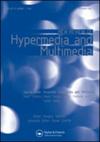HT’19精选论文特刊
IF 0.8
4区 计算机科学
Q3 COMPUTER SCIENCE, INFORMATION SYSTEMS
引用次数: 4
摘要
许多超文本出版物提到Vannevar Bush的Memex (Bush, 1945)是超文本的原始思想之一。Memex是内存扩展器的缩写。它的核心功能之一是在文档中持久地存储思想的“轨迹”,以便用户可以在稍后的时间点跟踪它们。布什只是描述了Memex,但从未实际建造过。那是在数字计算机兴起之前,布什的机器是一种围绕储存在缩微胶卷上的文件而制造的机械设备。布什的想法在20世纪60年代被超文本先驱如道格拉斯·恩格尔巴特、西奥多·纳尔逊和安德烈斯·范·达姆再次采纳。计算机虽然昂贵,但在当时已经可用,使得超文本作为软件系统成为可能。这是该领域进一步发展的必要先决条件。事实上,创造了“超文本”一词的尼尔森意识到了它们的必要性:“让我来介绍‘超文本’这个词,它指的是一组书面或图像材料,它们以一种复杂的方式相互联系在一起,以至于无法方便地在纸上呈现或表现。(Nelson, 1965)当时,该领域的重点主要集中在通过链路相互连接的节点上。讨论主要是在学术界进行的,业界对此还没有广泛的兴趣。随着个人电脑的兴起,这种情况发生了变化,普通民众和组织都负担得起。到20世纪80年代,学术界和软件公司开发了几种超文本应用程序。当时有许多相互竞争的超文本方法。例如,Eastgate Systems发行了《Storyspace》(Bernstein, 2002;Joyce, 1991),一个超文本系统,为超文本小说的写作提供了一个二维空间;布朗大学开发了Intermedia,承诺提供像复制和粘贴一样简单的链接创建机制(Meyrowitz, 1986, 1989);超文本系统Guide (Brown, 1987)是最早在Macintosh和Windows pc上运行的跨平台超文本应用程序之一。还有很多其他的本文章由计算机程序翻译,如有差异,请以英文原文为准。
Special issue of HT'19 selected papers
Many hypertext publications mention Vannevar Bush’s Memex (Bush, 1945) as one of the original ideas of hypertext. Memex is an acronym for Memory Extender. One of its core features is to store “trails” of thoughts persistently over documents such that a user may follow them at a later point of time. Bush only described Memex, but never built it physically. This was the time before the rise of digital computers, and Bush’s machine was a mechanical device built around documents stored on microfiche. Bush’s ideas were been taken up again in the 1960s by hypertext pioneers such as Douglas Engelbart, Theodor Nelson, or Andries van Dam. Computers, although expensive, were already available at that time, making hypertext as software systems possible. This was a necessary prerequisite for further developments in the field. In fact, Nelson, who coined the term hypertext realised their necessity: “Let me introduce the word ‘hypertext’ to mean a body of written or pictorial material interconnected in such a complex way that it could not conveniently be presented or represented on paper.” (Nelson, 1965) At that point of time, the focus in the field was primarily on nodes interconnected by links. Discussions took place mainly among academics—the industry was not yet broadly interested. The situation changed with the rise of personal computers, which were affordable by ordinary people and organisations, and by the 1980s, several hypertext applications have been developed by academics and software companies. It was a time with many competing hypertext approaches. For example, Eastgate Systems released Storyspace (Bernstein, 2002; Joyce, 1991), a hypertext system that offers a 2D space for writing hypertext fiction; Brown University developed Intermedia with the promise to provide link creation mechanisms that would be as easy as copy & paste (Meyrowitz, 1986, 1989); and the hypertext system Guide (Brown, 1987) was one of the first cross-platform hypertext applications that ran on Macintosh and Windows PCs. There were many other
求助全文
通过发布文献求助,成功后即可免费获取论文全文。
去求助
来源期刊

New Review of Hypermedia and Multimedia
COMPUTER SCIENCE, INFORMATION SYSTEMS-
CiteScore
3.40
自引率
0.00%
发文量
4
审稿时长
>12 weeks
期刊介绍:
The New Review of Hypermedia and Multimedia (NRHM) is an interdisciplinary journal providing a focus for research covering practical and theoretical developments in hypermedia, hypertext, and interactive multimedia.
 求助内容:
求助内容: 应助结果提醒方式:
应助结果提醒方式:


